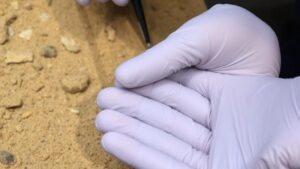How to Use Wind Direction and Shifting Sand Dunes for Predictive Relic Hunting
Understanding Wind Direction and Its Impact on Sand Dunes
The utilization of wind direction and shifting sand dunes plays a significant role in predictive relic hunting. Wind patterns dictate the movement of sand, which can bury or reveal artifacts over time. A solid grasp of these natural elements can vastly improve the effectiveness of relic hunters.
The Science of Wind Direction
Wind direction is determined by atmospheric pressure systems, geographical features, and eddy currents. primary forces at play include:
- Geographical Features: Mountains, valleys, and bodies of water can greatly influence wind patterns. For example, wind may funnel through mountain passes, increasing its speed and ability to erode sands.
- Seasonal Changes: Seasonal variations impact wind direction considerably; for instance, the summer months in many regions experience predominant sea breezes, while winter may bring more northerly winds.
Understanding these factors enables relic hunters to predict where sand will accumulate or be eroded, leading to uncovering or redistributing artifacts.
Shifting Sand Dunes: Natural Indicators
Sand dunes are dynamic landscapes shaped by wind. Their migration and formation are key indicators of potential sites where relics may be found. changing contours of dunes reveal the historical settling of sands and objects. Common types of dunes include:
- Barchan Dunes: Crescent-shaped and formed by unidirectional winds; they tend to move across the landscape.
- Transverse Dunes: Formed perpendicular to the wind direction; often occur where there is an abundance of sand.
These formations can expose or cover significant archaeological finds, making them focal points for prospective relic hunters.
Integrating Wind Patterns and Dune Migration in Relic Hunting
Combining knowledge of wind direction with the behavior of sand dunes allows for strategic searches aimed at maximizing artifact recovery. This integrated approach can be broken down into practical steps:
1. Mapping Dune Locations
Before conducting a search, producing detailed topographical maps of the area is essential. This includes marking existing dunes, tracking seasonal wind patterns, and predicting their movement over time. High-resolution satellite imaging can be useful in this regard, providing indications of past dune shifts and the potential locations of buried artifacts.
2. Observing Wind Changes
Once on-site, regular observation of the wind’s effects on sand dunes is crucial. The following methods can be embedded into the relic hunting strategy:
- Monitoring Wind Speed and Direction: Using an anemometer can provide real-time data on wind conditions.
- Documenting Erosion and Accumulation: Noting where sand has been eroded or deposited can reveal potential artifact hotspots.
3. Timing Your Search
The timing of your search can greatly impact success rates. Ideal conditions typically occur following strong winds, which may shift dunes and expose artifacts previously hidden. Similarly, after storms, relic hunters often find that the sediment landscape has altered, revealing items buried beneath the surface.
Case Studies: Success Stories in Predictive Relic Hunting
Several case studies demonstrate the effectiveness of understanding wind direction and sand dune movements in relic hunting:
The Sahara Desert Findings
In 2016, a team of archaeologists in the Sahara Desert used wind pattern data to locate ancient campsites that had been obscured by advancing dunes. By mapping prevailing winds and observing dune shifts, they successfully uncovered tools and pottery dating back thousands of years.
The Great Sand Dunes National Park
The Great Sand Dunes National Park in Colorado serves as a prime example where wind dynamics play a crucial role in relic discovery. Researchers noted that every few years, significant dune movement exposes ancient materials. Their predictive models, based on historical wind data, guided excavations that led to successful findings of Native American artifacts.
Actionable Takeaways for Relic Hunters
To enhance your relic hunting strategies utilizing wind direction and shifting sand dunes, consider the following actionable steps:
- Conduct Preliminary Research: Gather data on wind patterns and previous finds in the target area.
- Invest in Technology: Equip yourself with tools like anemometers, GPS devices, and satellite imaging software.
- Network with Experts: Collaborate with geologists or archaeologists who specialize in wind erosion and its effects on landscapes.
By integrating these strategies, relic hunters can leverage natural phenomena to their advantage, increasing the likelihood of successful discoveries in an ever-changing landscape.


